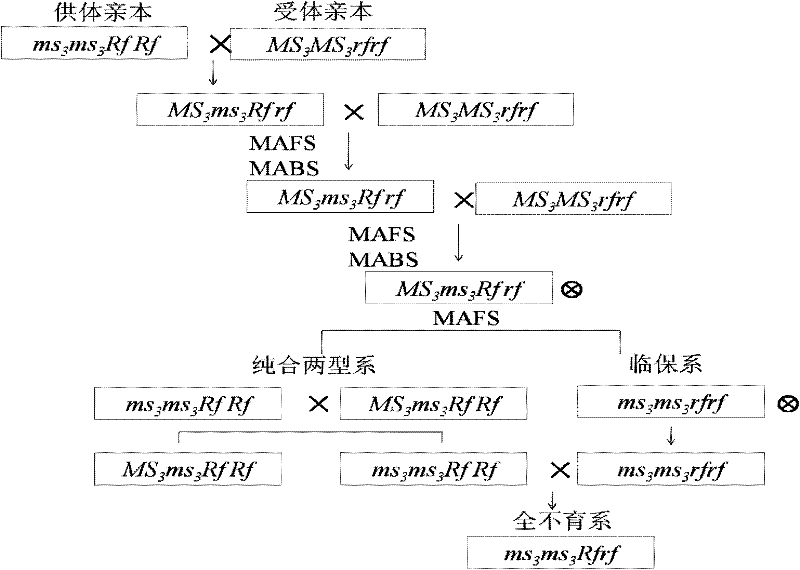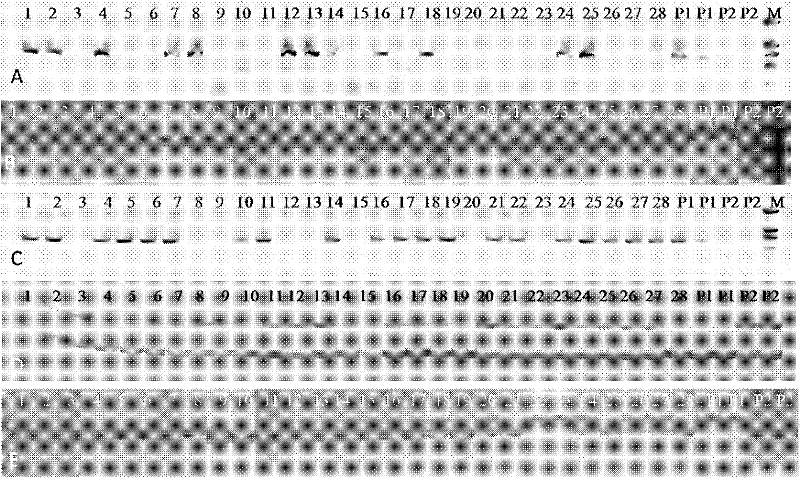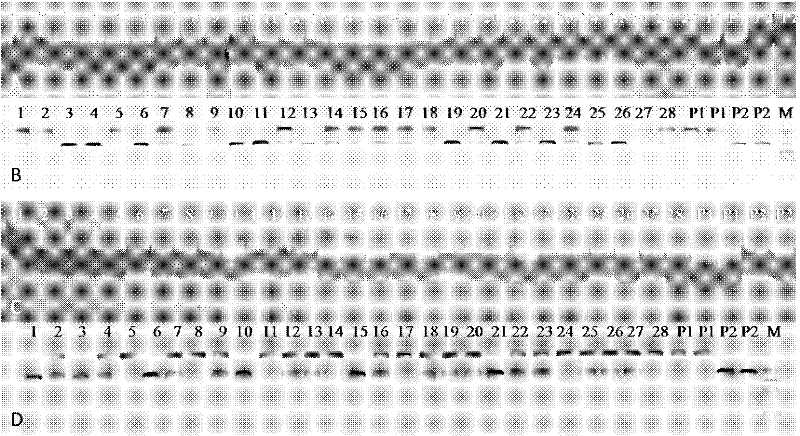A Molecular Marker and Application of a Rapeseed Recessive Genic Sterile Gene Segment
A technique for recessive sterility and molecular markers, applied in the field of molecular markers for the control of recessive sterility gene segments in Brassica napus
- Summary
- Abstract
- Description
- Claims
- Application Information
AI Technical Summary
Problems solved by technology
Method used
Image
Examples
Embodiment 1
[0039] A method for preparing a nucleotide sequence of a gene segment controlling recessive nuclear sterility of Brassica napus and a molecular marker, the steps of which are:
[0040] The applicant's unit has located BnMs3 and Bnrf (Bnesp) in a genetic interval of less than 0.2cM on the N19 and N7 linkage groups of Brassica napus through the primary and fine mapping of the genes BnMs3 and Bnrf that control the recessive sterility of rapeseed Inside.
[0041] A. The Tapidor BAC library was screened by marker screening combined with Southern hybridization, and the target clones JBnB043L23 and JBnB089D05 containing BnMS3 and Bnrf were obtained respectively.
[0042] B. The nucleotide sequences of the candidate gene segments of BnMs3 and Bnrf (Bnesp) were obtained by local sequencing of the target BAC and the combination of further development markers and comparative sequencing. The sequence information is as follows:
[0043] 1) The nucleotide sequence of the BnMs3 gene segmen...
Embodiment 2
[0056] Similar to 987, 195-14 (please refer to fill in the genetic resources table) (excellent parental material bred by the applicant's research group) isotype is BnMs3Ms3rfrf (obtained by genetic analysis, see references for data, Dong Fafa et al., 2010, The same below), use the homozygous sterile line 9012A (please refer to fill in the genetic resources table) (homozygous sterile line provided by researcher Chen Fengxiang of Anhui Academy of Agricultural Sciences) as the donor material, specifically take 987 as an example: a The application of molecular markers for controlling the recessive genetic sterile sterility gene segment of Brassica napus in the molecular marker-assisted insemination of recessive genetic male sterile lines and temporary protection lines of Brassica napus, the steps are:
[0057] In the spring of 2009, the applicant used 9012A as the donor parent, and the excellent hybrid parent 987 bred by the applicant as the recipient parent, and crossed at the flo...
Embodiment 3
[0063] Materials similar to Zhongshuang 9 (please refer to fill in the genetic resource form) (an excellent conventional variety bred by the Chinese Academy of Sciences Oil Plant Selection) with genotype BnMs3Ms3RfRf, using temporary insurance line T45 (please refer to fill in the genetic resource form) (the subject of the applicant The excellent double-low recessive genic male sterile line bred by the group) was used as the donor material, and the markers used for prospect selection are shown in Table 1. A molecular marker controlling the recessive genic male sterility gene segment of Brassica napus was used in the The application of the molecular marker-assisted transfer of the recessive genic male sterile line and the temporary insurance line of rapeseed type, the steps are: the specific steps are as follows:
[0064] 1) In the spring of 2008, the applicant used T45 as the donor parent, and the conventional species Zhongshuang 9 (ZS9) which was widely promoted in production ...
PUM
 Login to View More
Login to View More Abstract
Description
Claims
Application Information
 Login to View More
Login to View More - R&D
- Intellectual Property
- Life Sciences
- Materials
- Tech Scout
- Unparalleled Data Quality
- Higher Quality Content
- 60% Fewer Hallucinations
Browse by: Latest US Patents, China's latest patents, Technical Efficacy Thesaurus, Application Domain, Technology Topic, Popular Technical Reports.
© 2025 PatSnap. All rights reserved.Legal|Privacy policy|Modern Slavery Act Transparency Statement|Sitemap|About US| Contact US: help@patsnap.com



